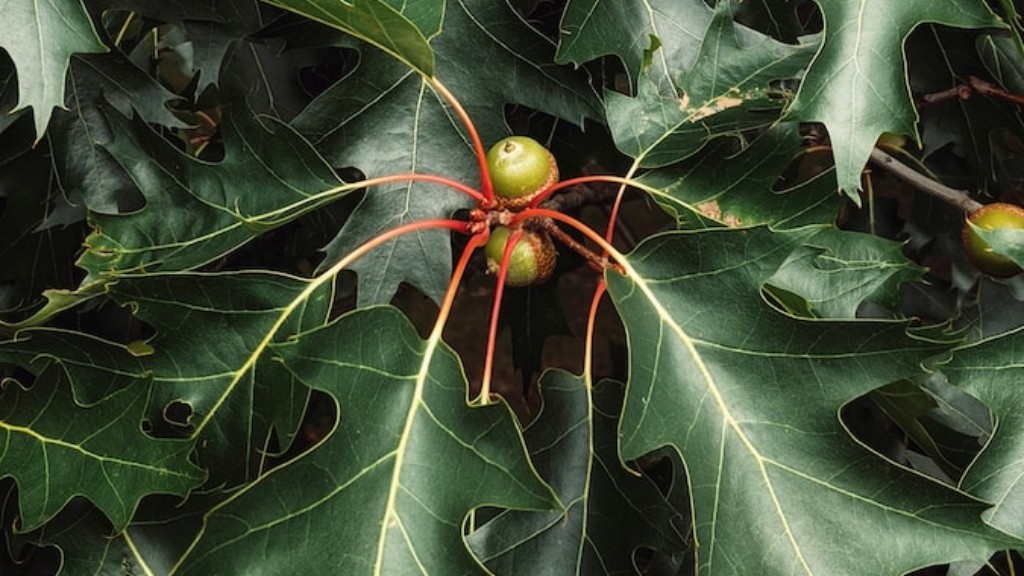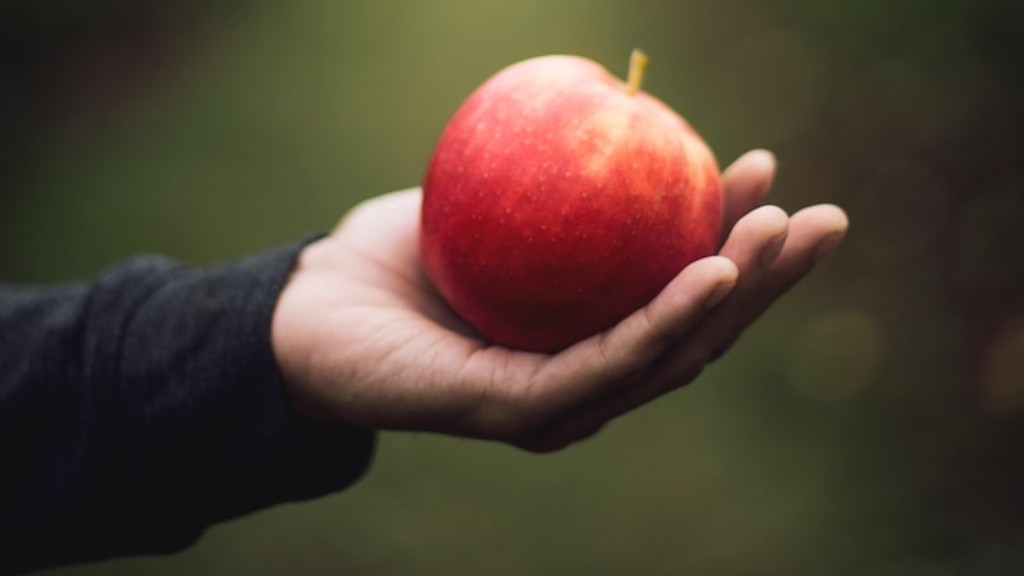Lemon trees can be grown indoors with favorable conditions, but knowing when it’s time to bring your lemon tree indoors is an important step in ensuring proper care and keeping your tree healthy. While the natural tendency may be to bring your lemon tree indoors as soon as cold weather is forecasted, it’s best to wait until the temperature is consistently below 50°F. When the temperatures drop too low, your lemon tree could suffer from structural damage or lose leaves due to the sudden change in environment.
As a rule of thumb, outdoor lemon trees should be brought indoors approximately 6 weeks before the first frost. Depending on the current temperatures and light levels, the actual timing may vary. If your local temperatures are consistently below 50°F, it’s probably time to bring your tree indoors or at least to a shady, sheltered spot.
If you’re unsure about when to bring your lemon tree indoors, one of the best ways to check is to measure the temperature. Using a thermometer, you can measure the temperature at different times of day and night over the course of a few weeks. Make sure to place the thermometer in the area where the lemon tree is located.
Before bringing the tree indoors, it’s important to prepare by cleaning the tree and its pot. Start by removing any dead leaves or branches, then wipe the leaves down with a damp cloth. After that, disinfect the pot and make sure there are no pests or insects that may have made their way onto the tree.
When you’re ready to bring the tree indoors, choose a spot that gets plenty of light. Citrus trees need at least 6 hours of direct sunlight every day, so make sure to pick a spot near a window or in a sunroom. If you’re unable to provide enough natural light, you can always supplement with artificial light or a grow light.
When the lemon tree is inside, you’ll need to pay extra attention to the water and temperature levels. Most citrus trees prefer slightly acidic soil and an even, consistent temperature of around 65°F. Keep an eye on the humidity levels and mist the leaves regularly if needed. Last but not least, make sure to give your lemon tree enough nutrients. Feed your lemon tree using a citrus fertilizer every other month or so.
Watering a Lemon Tree
Lemon trees are generally very tolerant of drought, but they still need to be watered regularly to stay healthy. If the soil feels dry and crumbly, it’s time to water your tree. Make sure to use room-temperature water to avoid any potential shock. To get the optimal amount of water, you can measure and monitor the moisture levels with a soil moisture meter.
When it comes to watering, it’s important to take into account the type of soil. While sandy soil dries out quickly, clay soil can become waterlogged and retain too much moisture. Depending on the type of soil, you may need to adjust the frequency of watering and make sure the soil isn’t too wet or too dry.
It’s also important to note that over-watering can lead to root rot, so it’s best to water only when the soil is dry and not to water too frequently. Allow the top 2 inches of soil to dry out before watering again. If in doubt, stick your finger into the soil and feel for the moisture before watering.
To ensure that the water is penetrating the roots, it’s important to water the soil around and below the leaves, rather than just the surface. Be careful not to get the leaves too wet, as this can encourage fungus and other diseases.
Finally, it’s also beneficial to use a liquid fertilizer or compost tea once a week to help your lemon tree grow and stay healthy.
Fertilizing a Lemon Tree
Fertilizing is an important part of lemon tree care. To ensure proper nutrition, use an all-purpose fertilizer once a month from late winter to early autumn. It’s best to use a balanced fertilizer that contains nitrogen, phosphorus, and potassium (NPK) for optimal growth. Make sure to avoid fertilizers that are high in nitrogen, as this could lead to a large amount of leaf growth and not enough fruit.
For best results, use a slow-release fertilizer to help your lemon tree receive the nutrients needed over a longer period of time. This type of fertilizer contains essential micronutrients such as magnesium, iron, and manganese, which can help encourage healthy growth and strong fruits.
When applying fertilizer, make sure to spread it evenly and lightly around the roots. Avoid putting the fertilizer too close to the trunk as this can cause damage. Lastly, make sure to water your tree shortly after applying the fertilizer to help the nutrients absorb into the soil.
If you’re not sure how much fertilizer to use or when to fertilize, it’s best to consult with a local nursery or extension office for specific advice on your particular tree.
Pruning a Lemon Tree
Pruning is an important part of lemon tree care, as it helps promote strong, healthy growth. Start by removing any dead or damaged branches and remove any competing shoots or roots that may be competing for nutrients.
It’s also important to prune your tree regularly to create a well-balanced shape. Prune in the late winter just before spring. Pruning too early can lead to new growth being damaged by the cold temperatures. Make sure to prune the branches at an angle and not to prune more than 25% of the total plant.
You can also prune your lemon tree for more manageable growth and better fruit production. Prune off excess foliage and sucker growths to help give the branches more breathing room for maximum light exposure. Make sure not to prune too late in the season, as this can lead to cold damage.
Finally, if you want to encourage more fruit growth, you can prune your tree every few months. Prune off any stem tips and side branches that don’t have any fruit on them, as this will help encourage new growth and more fruit production.
Diseases and Pests
When it comes to disease and pest control, prevention is the best approach. Regularly inspect your lemon tree for signs of disease or pest infestation and take corrective action as soon as possible. Common symptoms include yellowing leaves, wilting, or discoloration.
One of the most common pests of lemon trees is the citrus scale. These insects feed on the plant’s sap and can make the foliage look sticky and discolored. To control citrus scale, you can use natural insecticides such as neem oil or insecticidal soap. It’s important to follow the directions on the package for proper application.
Another common problem is fungus, which often shows up as dark spots or brown patches on the leaves. Fungal infections can be managed using a fungicide and applying a light spray of it directly to the affected areas. Make sure to read the label for proper application and safety instructions.
Finally, it’s important to keep an eye out for any signs of mealybug or aphids. These bugs feed on the plant sap and can stunt the growth of your lemon tree. To control these pests, you can use a homemade soap and water solution or an insecticidal spray.
Protecting Your Lemon Tree
It’s important to take steps to protect your lemon tree from cold weather and frost. If your outdoor temperatures drop below 50°F, wrap your tree in a sheet or blanket for extra protection.
If the temperatures are consistently below 40°F, move your lemon tree to a sheltered area or cover it with a plastic sheet. It’s important to keep the plastic sheet away from the leaves to avoid frost damage. Make sure to remove the plastic during sunny days to allow the tree to get some light.
It’s best to monitor the temperature in the area where the lemon tree is located to make sure it stays above freezing. If the temperatures reach below 25°F, it’s best to move the tree indoors. Lastly, avoid pruning your tree during cold weather and make sure to water your lemon tree only when necessary.





